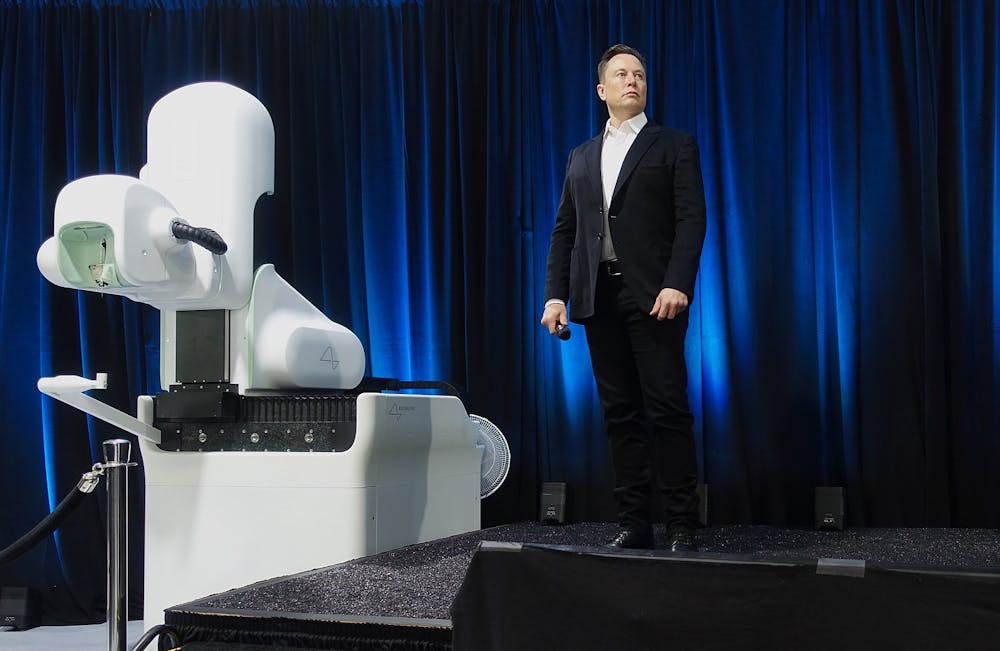By Rajika Chauhan
Staff Writer
Elon Musk has made a prolific name for himself in the past decade, not only through the accumulation of wealth, but also as through his innovative and often divisive technological endeavors to which he has pledged his backing and resources. One such endeavor is Neuralink, a company co-founded by Musk in 2016, which aspires to produce significant advances in the realm of what neuroscientists and engineers term “the brain-computer interface.”
According to Nature, the BCI movement intends to develop technology that will be able to read neural activity and translate it to actions on a computer or other machines, without the need for physical activity as an intermediary. While the aims and scope of the various efforts being undertaken under the BCI umbrella are variable, proponents speak of a future where individuals who are paraplegic may be able to control devices, wheelchairs or prosthetics through mere thought.
In a recent post on X, Musk described Neuralink’s promise as “if Stephen Hawking could communicate faster than a speed typist or auctioneer.”
While much of Neuralink’s activity has been kept discreet, Musk made a bold reveal on Jan. 29, stating in a tweet, “The first human received an implant from @Neuralink yesterday and is recovering well. Initial results show promising neuron spike detection.”
Neuralink’s flagship product is a chip purported to be inserted into the brain, consisting of a small coin-like disk attached to an array of flexible wire threads. According to a brochure released by the company, the chip contains 64 flexible plumber threads, with 1024 sites to detect brain activity. These electrodes will record averages of electrical activity, or neuronal signaling, for collections of neurons, and transmit that information to a device to produce the intended action. The company has also said that it is developing a surgical robot to assist with insertion of the device into the brain.
Neuralink’s approach to the BCI is markedly different from other companies in the field, which have designed systems that must be physically tethered to a computer via an entry port in the skull. Neuralink intends to have its device operate wirelessly, creating complications not faced by previous iterations of the BCI, such as an increased risk for infections, according to Nature.
Researchers that have been leading progress in the BCI field have expressed excitement at the prospect of Neuralink’s ongoing work, but continue to issue notes of caution.
“What I hope to see is that they can demonstrate that it is safe. And that it is effective at measuring brain signals — short term, but, most importantly, long term,” said Mariska Vansteensel, a neuroscientist at University Medical Centre Utrecht in the Netherlands, in an interview with Nature.
Many scientists have also expressed frustration over Neuralink’s lack of transparency in its research and design process, according to Nature. Its recent clinical trial has been conducted under secrecy with little information made available to the public. The trial has also not been registered at ClinicalTrials.gov, an online register governed by the NIH on which most universities and medical institutions require that clinical trials be published. Registration is a regulatory step that ensures research trials are meeting established ethical standards when it comes to the treatment of volunteers.
The little information that is known about the current clinical trial comes from a study brochure released when the company began recruiting volunteers after receiving FDA approval last September, according to The New York Times. The brochure states that the trial is selecting for individuals with quadriplegia, who will have the device surgically implanted and will be followed for five years afterwards to assess device durability and success, using the implant at least twice a week to control a computer.
“This study involves placing a small, cosmetically invisible implant in a part of the brain that plans movements,” according to Neuralink’s website. “The device is designed to interpret a person’s neural activity, so they can operate a computer or smartphone by simply intending to move — no wires or physical movement are required.
The ultimate directions of this latest experiment on Musk’s part are yet to be determined, and some of his more audacious claims of restoring sight and curing paralysis seem to be yet well out of reach. Regardless, Neuralink has set its sights and considerable resources on the effort to transform the dream of a BCI into reality, and this latest development is the start of what may be a promising journey.







